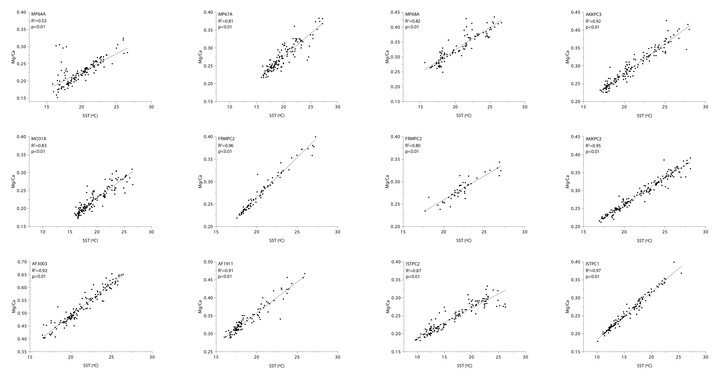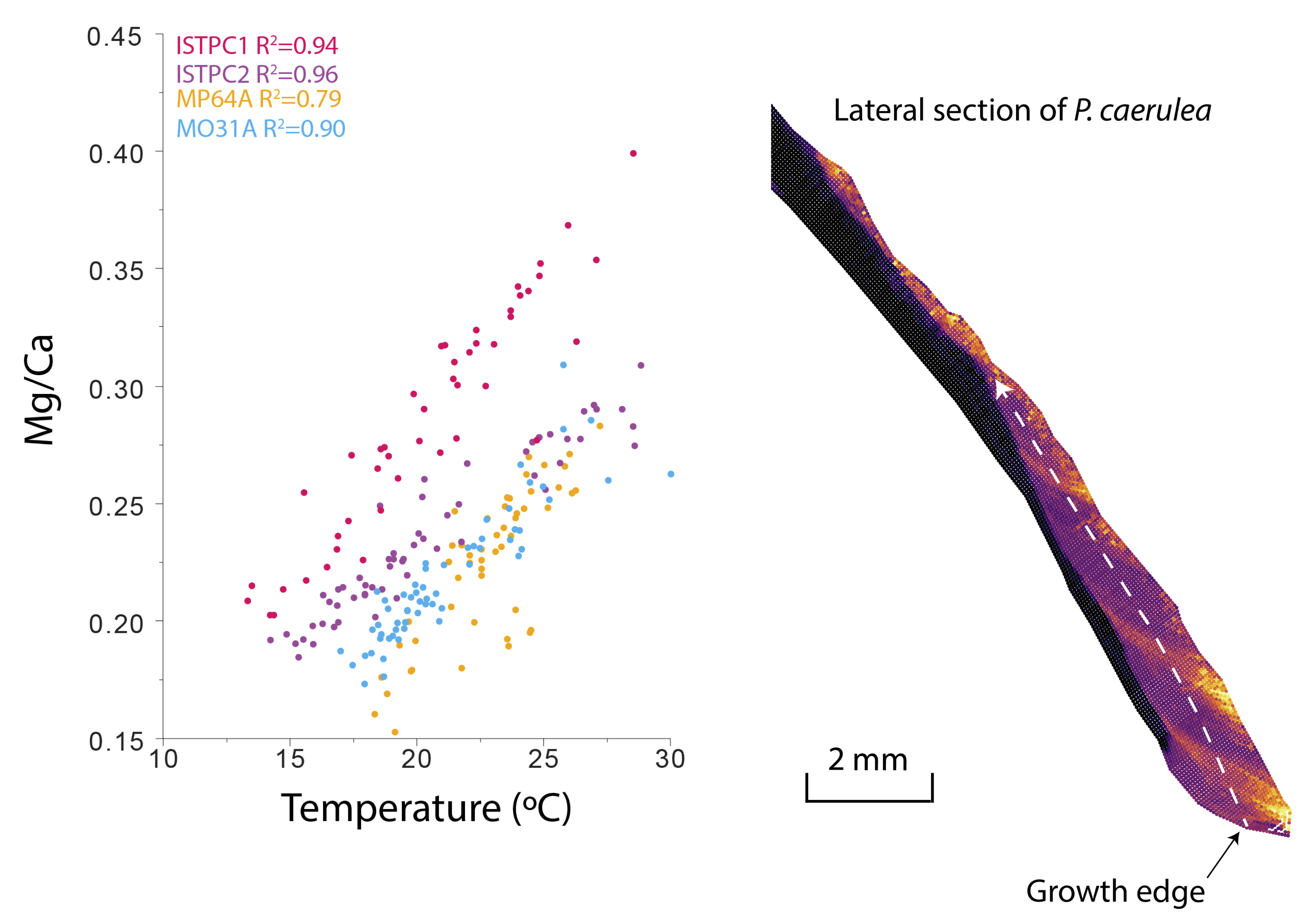Analysing Mediterranean Limpets
 Various correlation graphs between Mg/Ca ratios and sea surface
Various correlation graphs between Mg/Ca ratios and sea surface
In our study in
Scientific Reports, we tested LIBS on modern limpet shells that were
previously analysed by
Amy Prendergast and
Bernd Schöne using δ18O values and a high resolution sampling approach. With their large isotopic dataset and good knowledge of the shells’ growth structure, we had a great starting point to compare Mg/Ca ratios with changes in sea surface temperature (SST).
A link between the two has been shown in Mediterranean limpets before by
Ferguson et al. (2011), but the connection was not found to be consistently or in every shell specimen.
So we wanted to find out whether there might be spatial differences in the elemental patterns across one growth increment. This would mean that at the same time and within the same time slice, which is represented by one increment, different Mg/Ca ratios were deposited in the record, although the SST would be the same. This kind of spatial variability could have some implications for other Mg/Ca studies that try to come up with temperature equations that translate Mg/Ca ratios into ºC.
In fact, we found several spatial patterns in the elemental maps with the potential to skew an elemental proxy record, if analysed using only a line scan instead of mapping. Interestingly, after we had knowledge of these patterns, we were able to run line scans that take the spatial variability into account and resulted in very good correlation.
Sadly, we also found that there are definitive offsets between coeval mollusc shells, in a way that some Mg/Ca ratios had different ranges and thus recorded annual minima and maxima in SST with ratios that were specific to them. That means, that any temperature equation would only be valid for that one specimen.

Left: Comparison of four linear correlation graphs from shells of two different regions show strong correlations individually but not as a group. Right: Elemental map of limpet shell sections illustrates the gradual increase of Mg/Ca intensity ratios towards the exterior of the shell.
This specimen specific offset has probably somewhat do to with the way LIBS measures element concentrations, in comparison to mass spectrometers, but is also has to do with the way physiological effects and the crystal fabric of the increments change the elemental concentration on top of any SST controlled change. For me, this means that while we can see SST controlled seasonal change, which in archaeological contexts we can use to determine the season of death and seasonal site occupation, this change will be difficult to translate into actual temperatures in °C unless we implement other geochemical measures, such as δ18O.
In the end, it still means that we will need fewer δ18O values per shell, and that we are not yet entirely free of long hours of manual sampling or micromilling in the lab, but at least we can get through many more shells than previously. So we have that going for us. All the best and until next time, Niklas